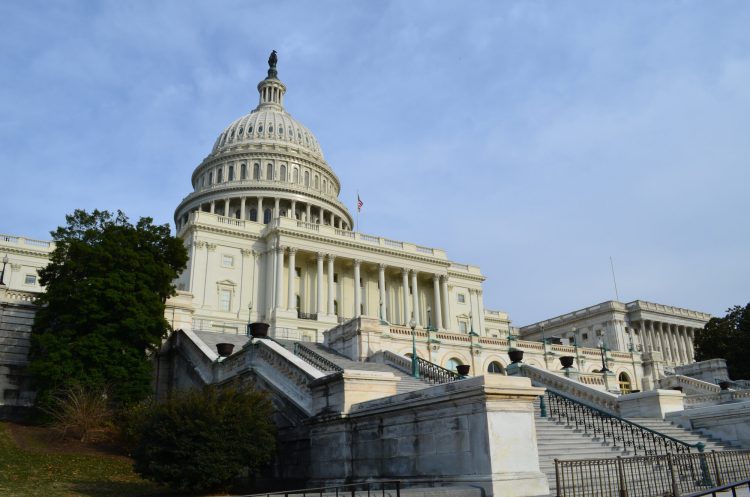This op-ed in The Des Moines Register discusses how immigration policy should be reformed to encourage economic growth. It is authored by Robert L. Bixby, executive director of The Concord Coalition and Douglas Holtz-Eakin and Jacqueline Varas of the American Action Forum (AAF), following the publication of AAF’s paper on pro-growth legal immigration released as part of a Concord Coalition project on fiscal responsibility and economic growth.
With the lowest unemployment rate in the nation, a slow-growing population and an agriculture sector in need of workers, Iowa is a good place to begin a national dialogue on a new legal immigration policy.
That was our aim when we recently presented an American Action Forum proposal called Building a Pro-Growth Legal Immigration System at Drake University. The proposal was part of a Concord Coalition project on fiscal responsibility and economic growth.
Recent debates over immigration policy have focused on border security and the fate of undocumented workers. While these are important issues, policymakers in Washington should not overlook the need for reform of the legal immigration system, and the opportunity to focus reform on the one thing that benefits every American: faster economic growth. In addition, improved economic growth can help solve our nation’s unsustainable fiscal outlook.
Fundamentally, long-term economic growth depends upon an expanding workforce and making that workforce more productive. Based on current trends, however, the outlook for growth is not encouraging.
The Congressional Budget Office (CBO) projects that the economy will grow at an average annual rate of just 1.9 percent over the next 30 years (adjusted for inflation). That would be a significant drop from the 2.5 percent average rate over the past 30 years.
Demographic changes are a large driver of these slower-growth projections. Since 1950, the growth in potential gross domestic product (the maximum possible production of the economy if all resources were fully utilized) has been because of both, in roughly equal parts, a growing labor force and rising productivity.
Over the coming decades, CBO projects labor force growth will be just one-third of the recent historical average as baby boomers retire, and productivity growth will be slightly below its average since 1950. This means that achieving growth anywhere near past levels will require new policies that increase the size of the labor force and improve productivity.
Many studies have indicated legal immigration could help with both. While it is not a panacea, it would be a source of strength for the economy. Moreover, higher rates of economic growth would improve wages, boost government revenues and help put the federal budget on a sustainable path.
A well-designed legal immigration policy can advance entrepreneurship, augment productivity gains, fill skills gaps and combat demographically driven labor-force declines. Especially at a time of record-low unemployment and shortfalls of qualified workers, a new approach to legal immigration has the potential to be a powerful force for economic growth.
The National Academy of Sciences concluded in a 2016 report: “Immigration is integral to the nation’s economic growth. The inflow of labor supply has helped the United States avoid the problems facing other economies that have stagnated as a result of unfavorable demographics, particularly the effects of an aging workforce and reduced consumption by older residents.”
We propose focusing legal immigration on the economics of a productive labor force. Our two-part visa reform uses a points system to identify productive workers either by their credentials for education and skills or through proven work histories.
The first part is designed to identify highly skilled, highly educated and entrepreneurial workers that are well positioned to assimilate successfully into the United States. Applicants would be awarded points for education, experience and English proficiency. Additional points would be awarded for family relationships and experience in high-demand occupations. Relevant to Iowa’s economy, the governor of any state could augment the score of an applicant by 10 points if they possessed experience in occupations of particular local importance.
While high-skilled workers are important, some of our biggest labor shortages are in lower-skilled fields. Therefore, the second part of the visa reform is a temporary visa system available to workers seeking temporary or seasonal work or who otherwise want to work in low-skilled occupations. Individuals that do not meet the points threshold, for instance because of lower education levels, would be eligible for admission through a temporary worker program. These individuals could then transfer to the permanent visa program after six years of demonstrated labor-market success.
Our immigration design has one last notable feature: We do not set an explicit cap on legal immigration. Instead of arbitrary limits, we propose that the level of legal immigration reflect the number of qualified applicants seeking entry and the demand for those workers in sectors such as agriculture, technology and construction.
There is a looming hole in Iowa’s and America’s economic future: a shortage of willing and able workers. Legal immigration is the most direct and effective method of filling that hole. Closing our minds, and our borders, to that remedy would ignore a key building block for what has always made America great.
Robert L. Bixby is Executive Director of The Concord Coalition. Douglas Holtz-Eakin is President of The American Action Forum. Jacqueline Varas is Director of Immigration and Trade Policy at The American Action Forum.
Continue Reading


